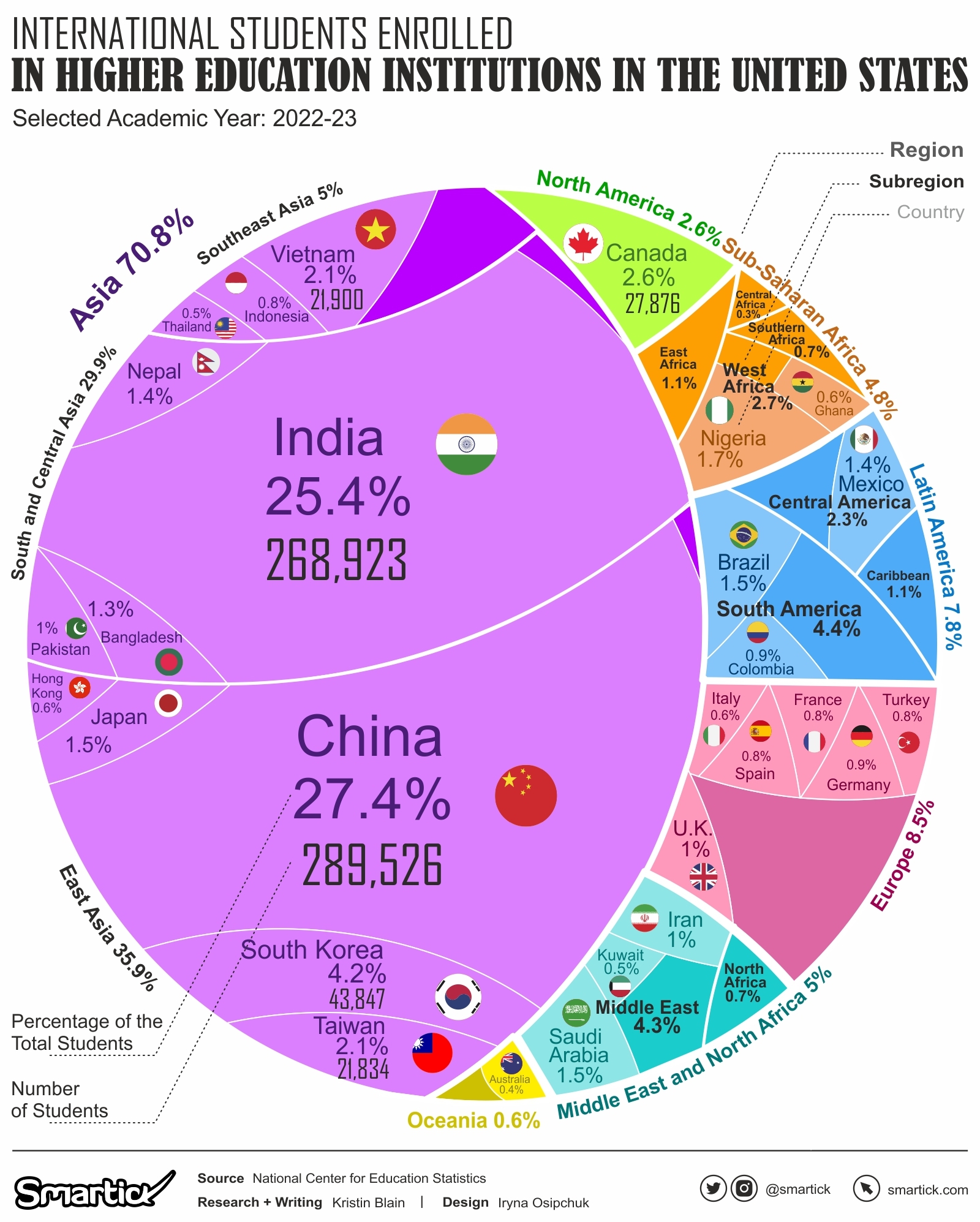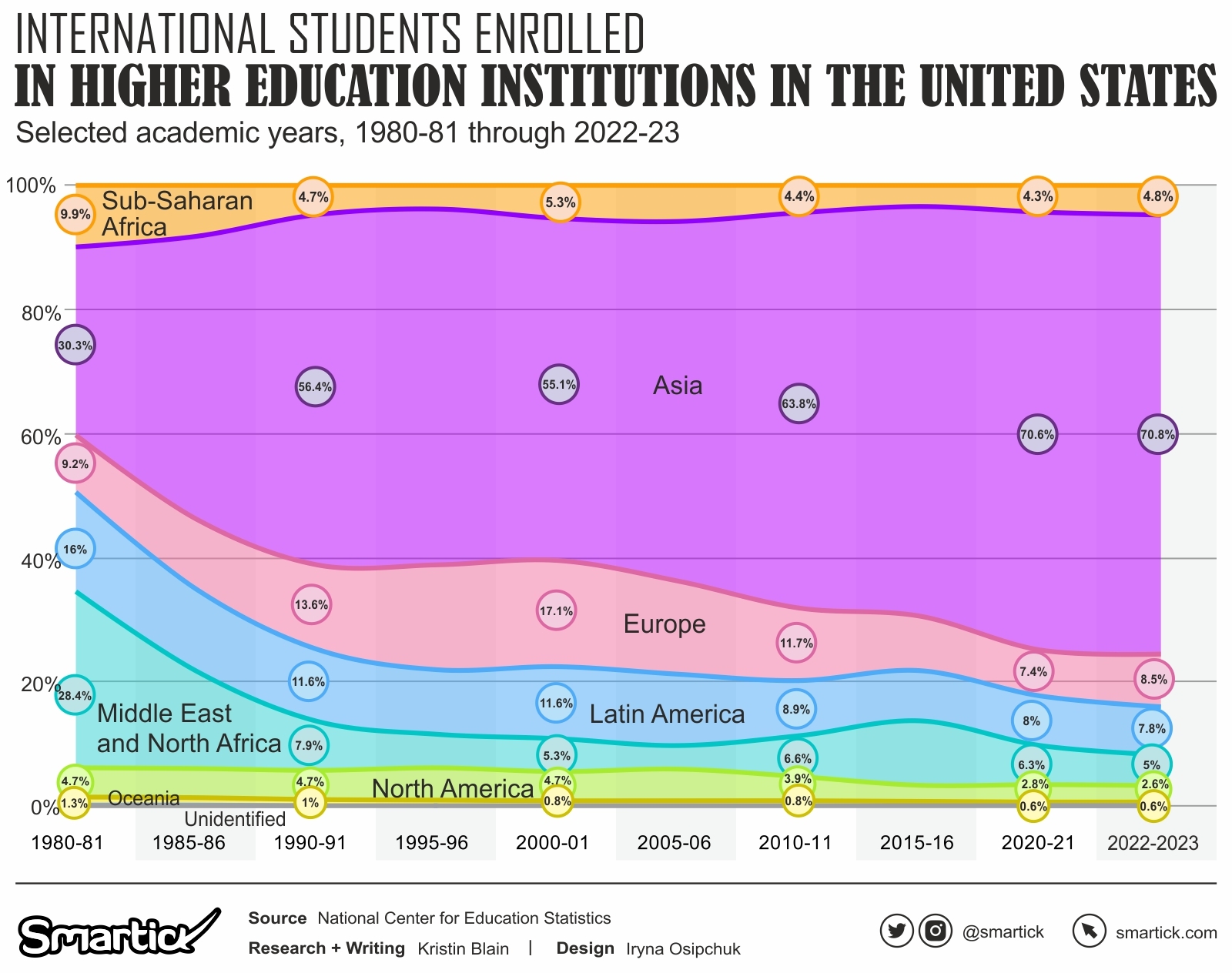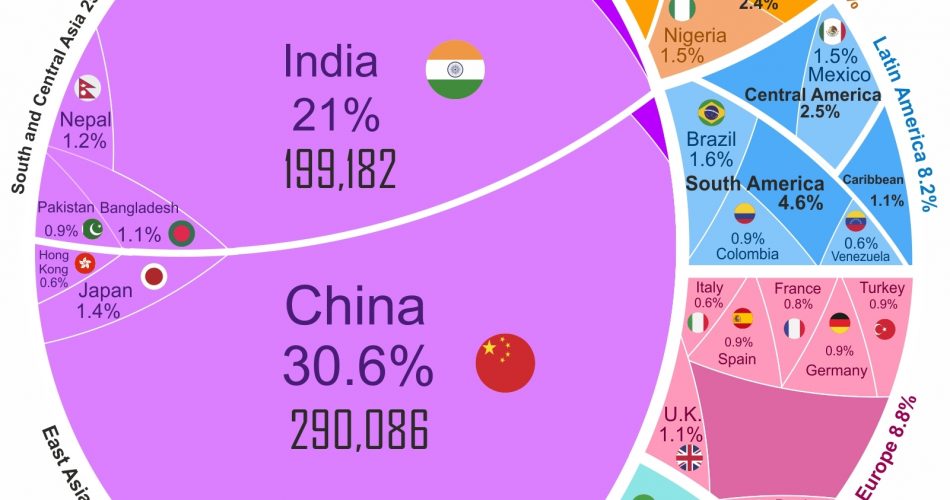
The Open Doors 2023 Report on International Educational Exchange has unveiled a transformative chapter in U.S. higher education, showcasing the United States as a global hub for students worldwide. The report, drawing data from the National Center for Education Statistics, underscores the resilience of international education, emphasizing its crucial role in fostering cross-cultural connections and global collaboration.

International Student Enrollment (2022/2023)
In a historic surge, international student enrollment in the United States exceeded one million during the 2022/2023 academic year, marking a remarkable 12% year-over-year increase. This growth, the fastest in over 40 years, not only highlights the adaptability of the U.S. education system but also reinforces the country’s attractiveness to global students. The economic impact of international students is noteworthy, contributing nearly $38 billion to the U.S. economy.
New International Student Enrollment Near All-time High
Breaking barriers, new international student enrollment reached nearly 300,000, showcasing a diverse academic landscape. Graduate student enrollment led the surge, with notable increases in undergraduate enrollment, breaking a five-year trend. This reaffirms the enduring appeal of U.S. higher education across academic levels.
China, while maintaining its position as the top-sending country with 289,526 students, experienced a slight decrease (-0.2% YoY). On the other hand, India achieved an all-time high in international student enrollment, witnessing a remarkable 35% year-over-year increase. Among the top 25 places of origin, countries like Bangladesh, Colombia, Ghana, Italy, Nepal, Pakistan, and Spain reached all-time highs, with Sub-Saharan Africa leading regional growth at +18% YoY
Regional Breakdown of International Student Enrollment (1979/80 – 2022/23)
Over the decades, the international student landscape in the United States has undergone dynamic transformations, with each region contributing to the rich tapestry of global education.

Asia: A Phenomenal Surge in Academic Pursuits
The growth in Asia stands as a remarkable testament to the enduring allure of U.S. higher education. In 1979/80, Asia sent forth 81,730 students, constituting 30.3% of the international student body. This number catapulted to an impressive 748,165 in the academic year 2021/22, representing a significant 70.8% of the total international students. The 2022/23 academic year continues this upward trajectory, with the region maintaining its prominent position in international student enrollment, emphasizing Asia’s sustained commitment to seeking education in the United States.
Africa, Sub-Saharan: Steady Rise in Global Education
The journey of students from Sub-Saharan Africa reflects a steady increase over the years, reaching 50,199 in 2022/23. This substantial growth of 18% year-over-year indicates a rising interest in U.S. education, showcasing the region’s resilience and determination to contribute to the global academic community.
Europe: A Tradition of Global Academic Pursuits
Europe, a traditional hub for international education, has maintained its presence over the years. Despite fluctuations in enrollment numbers, Europe consistently contributes to the diverse academic pursuits in the United States, with 89,906 students in 2022/23.
Latin America & Caribbean: Fostering Cultural Exchanges
Latin America and the Caribbean, with 81,945 students in 2022/23, showcase a stable presence. The region’s commitment to international education underscores the enduring appeal of U.S. universities, fostering cultural exchanges and academic exploration.
Middle East & North Africa: Consistent Contributions to Global Learning
Despite variations, the Middle East & North Africa region has consistently contributed to the international student body. With 52,295 students in 2022/23, the region’s engagement reflects a continuing interest in the academic opportunities provided by American institutions.
North America: Diverse Academic Pursuits in a Smaller Community
North America, while traditionally hosting a smaller number of international students, maintains a steady presence. With 27,876 students in 2022/23, the region showcases the diversity of academic pursuits and cultural exchanges facilitated by U.S. universities.
Oceania: Embracing Global Connections
Oceania’s contribution, with 6,782 students in 2022/23, highlights the diverse global connections fostered by the United States. Despite being a smaller region in terms of enrollment, Oceania represents the inclusivity and openness of U.S. higher education to students from various parts of the world.
In summary, the Open Doors 2023 Report reveals a historic milestone for U.S. higher education, welcoming over one million international students in the 2022/2023 academic year. The 12% year-over-year increase highlights the resilience of the U.S. education system and its global appeal. The economic impact, surpassing $38 billion, underscores the significance of international students. Regionally, Asia remains a major contributor, while other regions showcase steady growth, emphasizing the United States’ role as a diverse and inclusive hub for global education.

